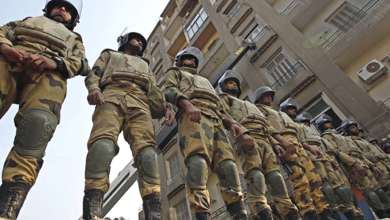
In 2017, the Saudi authorities announced a package of “reform” resolutions, most notably a resolution allowing Saudi women to exercise their right to drive cars, which was presented and promoted by the media in favor of Saudi Crown Prince Mohammed bin Salman (also known as MBS) within the framework of claims of his adoption and interest in the rights of Saudi woman.
In fact, the decision targeted two segments:
First, the Western society and the U.S. decision-makers,
Second, the Saudi women and youth – within the framework of the crown prince’s “reforms” that were declared in his political project of governance (Vision 2030).
However, soon after the Saudi authorities issued the long-awaited decree allowing women to drive cars, the State Security apparatus unexpectedly launched a wide-range arrest campaign targeting women activists who used to call for the right of Saudi women to drive, exposed them to the worst forms of torture inside the security services headquarters, and later sent them to the court (where their trial sessions are still going on).
Based on this situation, we found out that there is an apparent contradiction between fulfilment of allegedly “reform” promises and actions on the ground, including human rights violations by the Saudi authorities.
This report attempts to provide answers to the following four questions:
1- Why did the Saudi authorities arrest female advocates of women’s right to drive cars? Why did these arrests come soon after approval of this right?
2- To what extent can the use of physical and psychological torture against Saudi women within detention centers be described as a systematic practice of torture?!
3- Has the intellectual and political background of victims been a significant factor in the use of torture against them?
4- Are Saudi authorities under MBS serious in their promises regarding women’s rights?
Pre-Decision: A Brief History
The royal decree in September 2017 allowing Saudi women to drive inside the country is only an attempt to show that the Kingdom under Crown Prince Mohammed bin Salman has become more open and responsive to societal demands:
The calls for allowing women to drive began to appear in public since 1990 when a group of Saudi women (about 47 women led by many university degree holders) on 6 November 1990 staged a public protest against their country’s ban on women driving. For half an hour, they drove their cars in a convoy around the capital city of Riyadh until they were stopped by police, arrested, and taken into custody, prompting their families to sign pledges not to allow them to repeat the act. This revealed the Saudi community seeks to obtain their basic rights, which was faced by the Saudi government at the time with a formal religious fatwa issued on 9 November prohibiting women’s driving, only three days after the protest. The women who participated in the event were then suspended from work for two years and eight months and prevented from traveling abroad for 10 months.
And because the prohibition of women’s right to drive cars was not convincing from the religious point of view, especially that the religious bodies in other Arab and Islamic countries did not deny the women’s right to drive, there have been repeated demands for change in this regard. In 2005, Mohamed al Zelfah, member of the Saudi Shura Council, called for adding an article to the draft traffic law allowing women to drive inside Saudi cities, just like men. However, despite the official hints and promises under King Abdullah, the Kingdom did not see any change in this issue until the Arab Spring revolutions came in 2011, where a campaign called “I Will Drive Myself Starting June 17” was launched. Manal Al-Sharif, one of the participants in the campaign, shared a video sowing her while driving in al Khobar in the Eastern Region, where she was arrested but later released, and re-arrested and then re-released.
Later, in 2013, another campaign was launched titled “I have the right to drive”. In a sign of how pervasive online social networks have become in Saudi Arabia, the campaign was started on Twitter. It was the idea of the activist, Eman al-Nafjan, a professor of English literature at King Saud University, who set things in motion with a simple message saying that Saudi women would express their feelings about driving on 26 October. Influential Saudis have given their public backing, while several videos of women driving have been posted on the campaign’s website. However, the Saudi authorities registered violations against the women who participated in the campaign and detained some of them before they were later released. In 2014, Eman al-Nafjan drove a car from the UAE to Saudi Arabia after gaining a driver’s license from the UAE and tried to enter into Saudi Arabia relying on a Gulf Cooperation Council (GCC) agreement which states the validity of driving licenses in all the GCC countries, but she was arrested at the time before being released later.
It is apparent from the above review that the calls for allowing women to drive cars in Saudi Arabia was not a recent demand. In fact, the Saudi decision that allowed women to drive – which was described as a victory for women – is indeed a response to the minimum human rights, especially that Saudi Arabia was the only country over the world that denied women’s right to drive.
A positive step forward or a mask for a kingdom of horror?
Saudi Crown Prince Mohammed bin Salman has been keen to present himself as a reformist who adopts a more open approach to governance. His initial efforts have been hailed and welcomed by young people and some human rights defenders in Saudi Arabia, including activist Loujain al-Hathloul. The majority thought that the royal decree of September 2017 allowing Saudi women to drive within the Kingdom is constructive and considered it a step forward expecting other reform steps for boosting women’s rights in the Saudi society. However, on 24 June 2018, before the royal decree came into force, Saudi authorities launched a series of wide-range arrests against the female activists who used to defend women’s rights, including activist Loujain al-Hathloul, and then launched other campaigns targeting prominent women, including moderate academics such as Hatoun al-Fassi, who had hailed the royal decision allowing women to drive and praised the Saudi Ministry of the Interior’s interaction with her complaints. Therefore, the campaign of arrests against female activists and exposing them to torture raised questions about:
Why did the authorities arrest women activists who called for women’s right to drive? Why did these arrests come after this right was recognized?
The answer lies in the counter moves of repressive regimes against freedom calls in the Arab world, especially after the Arab Spring revolutions (2011), to deprive local activists of gaining any popularity as a result of the implementation of reforms that used to be among their demands.
However, the Saudi authorities accused several of those detained of serious crimes, including “suspicious contact with foreign parties” under thin legal pretenses, according to the Saudi Press Agency. Thus, a new category of human rights activists joined the ranks of detainees, a category that cannot be categorized as Islamists or political opponents of the ruling regime, as was the case in several previous arrests, most notably the September 2017 campaign targeting a group of academics and reformist scholars belonging to the Islamic trend.
However, despite the increasing severity of the repressive machinery and the patterns of violations inside the Kingdom, several reports about exposing detainees in general and women in particular to heinous torture inside interrogation buildings and detention centers were circulated on social networking sites. These reports started to gain growing momentum following the assassination of Saudi journalist Jamal Khashoggi inside the Saudi consulate in Istanbul on 2 October 2018.
Thus, the wave of internal repression covered by reform promises within Saudi society seems to have failed to bear fruit. Mohammed bin Salman’s repressive measures and the rising numbers of affected segments helped to enhance the demands for stopping violations against Saudi citizens, due to:
A- Active use of social networking sites by Saudi citizens, specifically Twitter, which contributed to enabling them to challenge and expose violations, communicate with each other and with others.
B- Involvement of the Saudi regime in suppressing the Arab Spring revolutions, in addition to causing damage to many neighboring countries, including the siege on the Gulf state of Qatar, aroused an anti-Saudi attitude in the Arab countries that seek change, which allowed a high level of interaction with what was happening in the Saudi interior, and helped the collapse of the stereotype image of the Saudi regime – as it was portraying itself – as a protector of religion.
Torture of women: a new pattern or a developing methodology?
Monitoring the reports published during the first three months of 2019 about exposing female Saudi activists to torture in prisons, such as an article by Alia al-Hathloul in New York Times, the sister of the jailed Saudi women’s rights activist Loujain al-Hathloul, on 13 January, in parallel with testimonies that we gathered from local activists and others to document all the abuses committed against women activists, including sexual harassment.
We divided this section into three parts:
– Part I: We identified three samples of female activists arrested in 2018. This is done in order to determine whether there is a pattern of torture practiced systematically, or these torture cases were the result of individual behavior as claimed by the Saudi authorities?
– Part II: We identified two female prisoners detained on terrorism charges, in order to see whether there were precedents in cases of torture against women.
– Part III: A review of Part I and II to see whether torture patterns have been developed (in terms of brutality) and what are the causes?
First: Documenting three cases to determine whether torture was practiced systematically, or it was only individual behavior?
Case 1: Loujain al-Hathloul
Loujain Abdullah al-Hathloul is a human rights activist was arrested on Tuesday, 15 May 2018. She was subjected to enforced disappearance for nearly two months, and we monitored the following patterns of torture and psychological abuse:
– Holding her in solitary confinement.
– Subjecting her to electric shocks.
– Threating her of raping, killing and throwing her body into the sewage system.
– Compelling the victim to eat during the day in the fasting month of Ramadan.
– Whipping her using a headband, where she was beaten on the thighs and other parts of her body.
– Attempting to remove her clothes by force and film her naked.
– Practicing sexual harassment against her, trying to hug and kissing her by force.
– Practice of psychological abuse against her through constant threat of rape and killing.
– Forcing her husband, comedian Fahad al-Batiri, to divorce her.
– Defamation of the victim and other detainees by government-run media outlets, where they were called “traitors” that conspire against the interests of the country.
This resulted in the deterioration of her psychological condition, suffering from constant shivering in her foot and hand, in addition to inability to walk normally and the existence of some traces of physical torture on her body.
Violations related to the course of justice:
– On 1 January 2019 (after being detained for about ten months), the Public Prosecution issued a statement alleging that the victim and other detained activists were not subjected to torture and that all their rights were guaranteed by the procedural system of the Kingdom. The Public Prosecution added that they have completed investigations with the detainees who will be referred to the court with a list of charges, while deliberately excluding any likeliness of being exposed to torture and coercion in the State Security headquarters.
Case 2: Eman Al-Nafjan
Eman Mohammed Fahd Al-Nafjan, a professor of English linguistics at King Saud University who was interested in Saudi women’s issues, was detained by the Saudi State Security on Tuesday 15 May 2018 and subjected to enforced disappearance for nearly three months. We monitored practice of the following patterns of torture and psychological abuse:
– Exposition to electric shocks.
– Exposition to waterboarding.
– Exposition to sexual harassment.
– Exposition to whipping with a headband on the feet and legs and kicking her body.
– Filming the victim while being tortured and using these videos in destroying the victim psychologically.
– Practice of psychological torture against the victim by asking her to choose between life imprisonment or murder.
– Holding the victim in solitary confinement for several months.
Case 3: Azizah al-Yousef
Aziza Mohammed al-Yousef, a Saudi women’s rights activist and academic, is one of the most prominent Saudi human rights defenders who had campaigned for Saudi women’s right to drive before the decades-long ban was lifted in June 2018, as well as other women’s rights issues.
Ms. Al-Yousef was arrested by the Saudi State Security on Tuesday, 15 May 2018, disappeared in one of headquarters of the State Security apparatus in Jeddah and exposed to torture. We have noted the following patterns of torture and psychological abuse:
– Deliberately putting the victim in a state of psychological collapse during investigations by telling her that all members of her family were killed in a car accident and telling her several hours later that it was just a joke!
– Exposing her to electric shocks.
– Exposition to waterboarding.
– Insulting the victim and deliberately humiliating her.
– Whipping the victim with a headband on feet and legs.
– Holding her in solitary confinement.
A review of the three previous cases shows that there is a consistent, repeated and deliberate pattern of detention and torture that cannot be ignored, given the following factors:
– Victims enjoy a distinct social status and some are well-known in the international community, which prevents any Saudi security officer from moving to arrest them except upon direct orders coming from the Saudi Royal Court.
– The arrests of the three cases were carried out on the same day, 15 May 2018, and were part of a campaign of large arrests of many Saudi female activists, which indicates the power of the decision maker who issued these arrest warrants.
– Similarities of the pattern of torture that the three victims were exposed to indicates that it is a systematic pattern, not an individual behavior.
Finally, the decision of the Public Prosecutor’s Office dated 1 March 2019, claiming that women activists were not subjected to torture and that they enjoyed all their rights guaranteed by the Saudi procedural system, reveals that there are high-level orders from the Royal Court on covering the crimes of torture that have occurred. Only the Saudi Crown Prince who controls all security services has the power to do so.
Second: Documentation of two cases of female prisoners on terrorism-related charges, to see whether there are precedents in cases of torture against women in Saudi Arabia
Case 1: Haila Al Qaseer
Haila Al Qaseer, a Saudi woman in her fifties, is considered the first female detainee in Saudi prisons after her arrest in February 2010 from the Buraidah city, al-Qassim, the Eastern Region. She was accused of supporting terrorist groups and sentenced to imprisonment, as the first Saudi woman to be arrested and imprisoned at the time on charges related to Saudi interior unrest after the first Gulf War and is expected to be released before 2025.
Regardless of the validity of the charges, we have been keen to communicate with some sources that followed the case as well as other cases at the time and compare this information with the data we had collected through Telegram groups, we have been able to document the following:
– Ms. Haila Al-Qaseer was subjected to enforced disappearance for more than 15 days.
– She was subjected to psychological abuse, including insults and threats.
– There have been claims that she was forced to take off her hijab (we have not been able to certify).
– She was held in solitary confinement.
– She was intentionally ill-treated by the guards.
As a result, the prisoner went on hunger strike in 2013, before being transferred to the Public Security Hospital and forcibly fed in December of the same year.
Also, the impact of social stigmatization on the detainee’s family was not taken into consideration. The Saudi media deliberately distorted the image of the detainee, causing psychological and social damage to the victim’s daughter, Rabab.
Despite this, we noticed that the victim has received popular solidarity in the area of her residence, which indicates her popularity, where the Qaseem witnessed peaceful demonstrations in August 2012 calling for the release of the detainee and others.
Case 2: Mai al-Talq
Mai Abdul Rahman al-Talq was known as the first Saudi woman to organize a peaceful women’s sit-in in Saudi Arabia in 2007, in front of the General Investigations Prison in Buraidah, calling for the freedom of her husband Abdel Malek al-Moqbel who was detained without trial in 2002. In March of 2013, the victim, together with others, organized a sit-in before the Supreme Court and the general prison in Buraidah. This sit-in was called the sit-in of the Board of Grievances. The demonstrators and the victim raised banners saying: “The People want to liberate prisons). The security forces abducted and forcibly disappeared her on charges for organizing “an illegal sit-in” and assembly, but she was released.
In 2014, in a sudden turnaround, the victim decided to flee to Yemen with her children, but she was arrested in April of the same year and sentenced to 13 years in prison.
We have been able to document some violations that she suffered as follows:
– The victim was exposed to torture and her shoulder was dislocated.
– She was not given a break during interrogation for performing her prayers.
– She was tried before a special court that is not independent and lacks competence.
– She was threatened of imprisonment by the court during a hearing held on 3 November 2014, where she was informed that she would go to prison while her husband whom she was defending would come out.
– The victim was held in solitary confinement for long periods, where she spent 4 years in Al-Ha’ir prison, before being transferred to the Tarafia prison in Buraidah.
– She was exposed to pressures, including deprivation of the visitation right (preventing her children to visit her).
A review of the two previous cases shows that there has been an old pattern of detention and torture that has begun to reach women since 2010, but that these violations were covered by claims that they were only individual behavior within the framework of counterterrorism.
Third: A review of Part I and II to see whether torture patterns have been developed (in terms of brutality) and what are the causes?
It is clear from Part I and II that the patterns of torture have undergone unprecedented developments due to the following reasons:
– Maintaining silence and failure to condemn violations of women’s rights in 2010 and beyond in allegedly terrorism-related cases have led to development of torture patterns that affected larger segments of women.
– A comparison between the era of the former Interior Minister and Crown Prince Mohammed bin Nayef and the current Saudi Crown Prince Mohammed bin Salman shows that Bin Nayef was smarter in managing security services.
– We noticed a pattern of sadism and masochism in the practice of torture on detainees in 2018.
– The Saudi State Security personnel seem to be greatly affected by some American horror movies and give cinematic names to torture centers, such as “The Horror Palaces”, apparently affected by American horror movies like: “The Haunted Palace”, a 1963 horror movie released by American International Pictures.
– According to more than five testimonies, torture was carried out under the supervision of Saud al-Qahtani, a counselor at the Royal Court and a close associate of Saudi Crown Prince Mohammed bin Salman. Al-Qahtani used to film some of the torture sessions, saying that the videos would be taken to the crown prince. In response to the appeal of one of the victims, Al-Qahtani once said: “No one is above us, even God).
– The torture during interrogation was partly aimed at destroying victims psychologically and affect their mental abilities in the future.
– We have been able to document that during interrogation, one of the victims was asked to work for the Saudi security services, and her mission was to lure Saudi women activists from abroad to the kingdom.
– Al-Zahban and al-Ha’ir prisons were used as illegal detention centers.
It is clear that the Saudi State Security apparatus and its personnel are not subject to any real societal accountability, and that the victims’ popularity or intellectual background did not protect them against torture. However, international media pressures later led to the cessation of torture and in some cases resulted in the release of some of them (Eman al-Nafjan, Aziza al-Yousef), but this did not prevent the Saudi authorities from arresting son of Aziza al-Yousef after the release of his mother, maintaining the detention of Loujain al-Hathloul and imposing a travel ban against her family, including her father.
Accordingly, we can say that:
– Torture crimes in Saudi Arabia are committed systematically against women from different ideologies (Islamist, liberal, and pan-Arab), and in cases related to terrorism or issues related to human rights activities.
– The age of detained women or their social status of the victim is not taken into account.
– Torture has witnessed a dramatic development if we compare the early cases of psychological abuse, distortion through media, and denial of treatment on terrorism-related charges with the cases of female activists detained in 2017 and 2018.
– Crown Prince Mohammed bin Salman’s era has witnessed expansion of illegal detention centers for practicing torture against victims.
However, as a result of the international pressure exerted on Saudi Arabia following the assassination of Saudi journalist Jamal Khashoggi, and due to numerous international press campaigns in solidarity with detained female activists, the Saudi authorities reversed their decision to transfer Saudi women activists from the Criminal Court to the Terrorism Court, and ordered them to be referred to the Criminal Court in Riyadh.
Conclusion
The Saudi authorities under Crown Prince Mohammed bin Salman seems to be unserious about promises related to women’s rights. Taking into consideration the systematic violations and torture of women, it seems that the Crown Prince looks at the file of women’s rights as a promotion tool to win the blessing of Western politicians for access to the throne. Once he reaches the throne, Bin Salman is expected to expose the Kingdom of Saudi Arabia (KSA) to an unprecedented state of deterioration of rights and freedoms.
However, Nouf Abdul Aziz al-Jarawi, a Saudi activist who was arrested in June 2018 after she had expressed her solidarity with women activists mentioned in this report, saying: “I will never surrender to any authority … and I have never turned my back to the oppressed” – has always been confident that the Arab Spring will come again.
لقراءة النص بصيغة PDF إضغط هنا.



